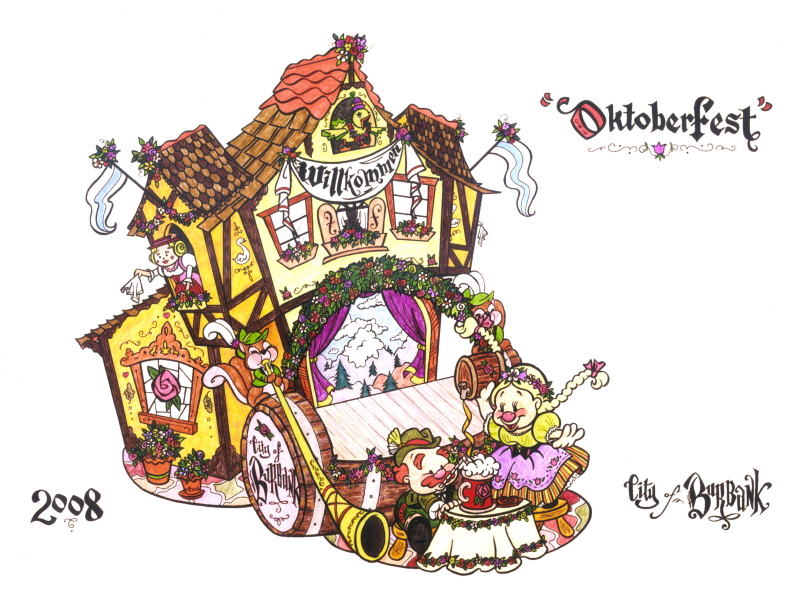Construction
Work begins on physically constructing the float just as soon as the design is finalized. It may seem silly to start building a float so many months in advance, but it's all done by volunteers and a lot of it gets done on weekends, at least in the early stages. Better to get an early start than to run out of time and not get your float completed by the parade. We saw that one year with another self-built entry that had to drive a 3/4 completed float in the parade. Not a pretty sight and an automatic disqualification for any awards. Do that two years in a row and you're likely not going to be invited back for a third attempt.
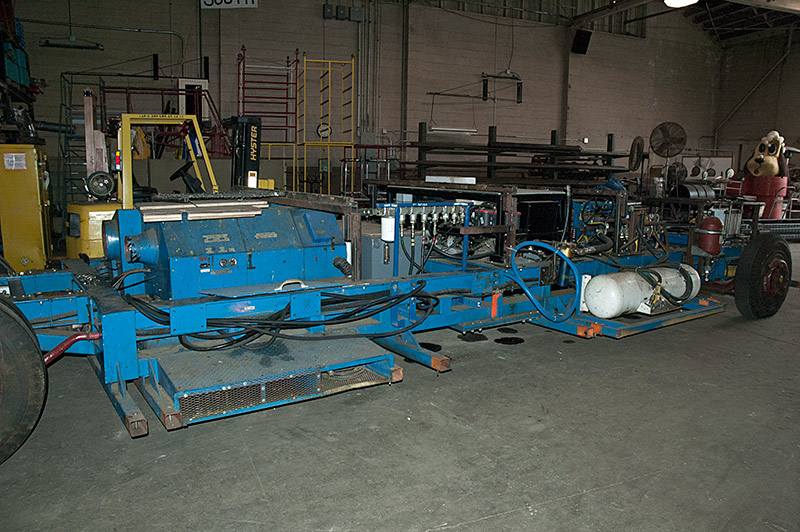
This is the float chassis as seen on March 24, 2007. All of the prior float has been removed at this stage and it was ready for its annual servicing. That's done now so there is easy access to the engines and other systems. Once the float is plopped on top it's next to impossible to get access to any of it, so this is a crucial time to make sure the chassis is in tip-top mechanical condition.
A fun fact about floats: the tires are filled with foam, not air! Not only does this keep them from going flat in the parade, but it also allows the float to be heavier.
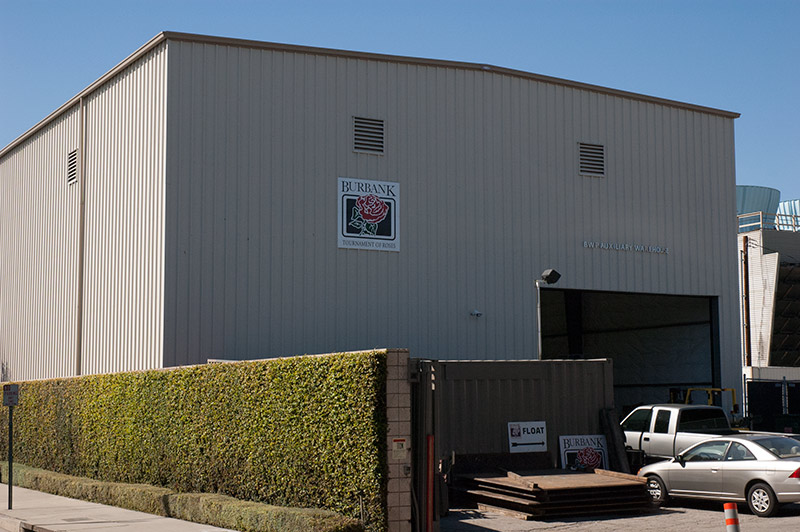
Ever wonder where the float actually gets built? This is the "Float Barn" where the magic occurs. The official name is "Burbank Water & Power Auxiliary Warehouse" but to us it's "the barn". This is a great facility provided by the city to facilitate the construction and to store all of the material between years.
Another fun fact: that big doorway was built to the same height as the lowest bridge on the parade route. If the float can fit out the door it will make it safely under all of the bridges. Better to find a problem here than on parade day!
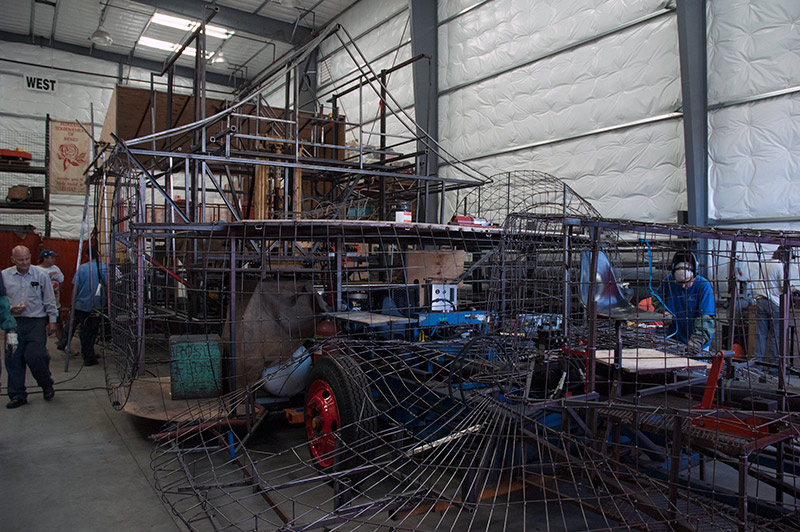
By October 20 the framework over the chassis was well underway. Every one of those steel rods had to be cut and then welded into place. Just looking at the number of rods in the section closest to the camera will give you an idea as to how labor intensive this part of the construction is - all for something that won't be seen by anyone during the parade.
The seat near the front is for the safety observer who has a brake pedal that can stop the float in the event of an emergency. The driver usually cannot see outside the float so this is an important function. If a child ran out and got run over by a float it would not be good for anyone involved.
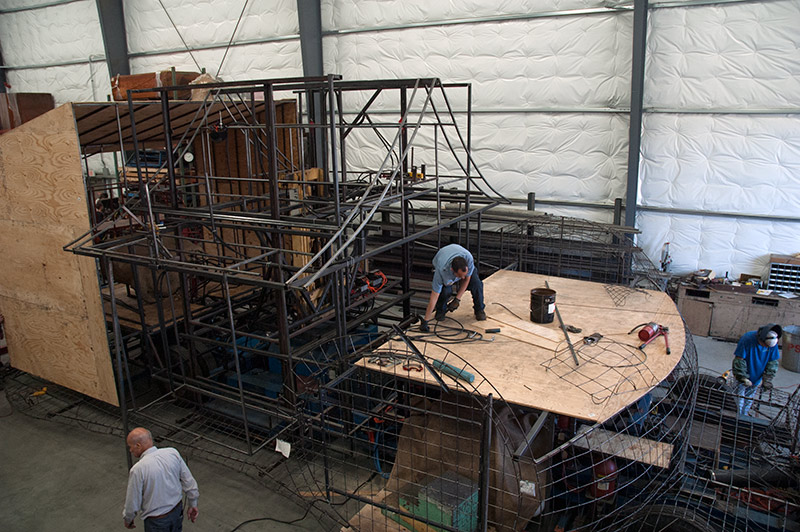
The chalet is seen here in the down position. A lot of steel was needed to provide support for the walls and roof that would then be decorated in floral materials. The back part of the building has already been sheathed in wood, and the rest of the house would be covered that week.
So how did we make the house raise and lower? All sorts of systems were considered. Some folks preferred a pulley system, others hydraulic rams. Then one day as we were discussing the pros and cons of the various options one of the guys pointed to an old forklift that was pretty much worn out. "Why not use that to raise and lower it?" A brilliant idea! The wheels and other non-essential pieces were removed and the remnants welded into the house frame. The two prongs on the forklift were attached to the upper story and our problem was solved.
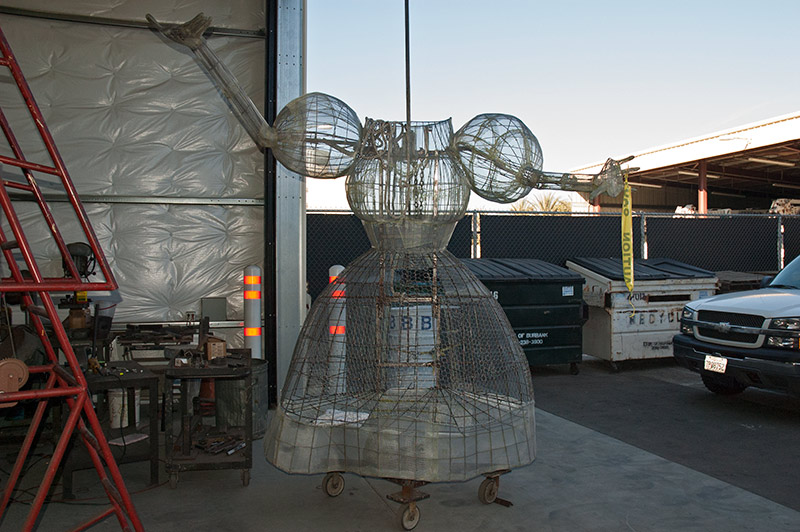
Here's our Fraulein on November 24. Steel rods were used for her general body shape, then everything was covered with wire mesh. The next step will be to cover the mesh, either with old sheets or newspapers, then foam will be sprayed on. When it hardens that's the surface that actually gets decorated.
Most of the set pieces like the people, squirrels, etc. are built and decorated off the float itself. Trying to do it all as one piece wouldn't allow enough room to get the job done in time. Where's her head? Inside the building, being carved from a block of foam.
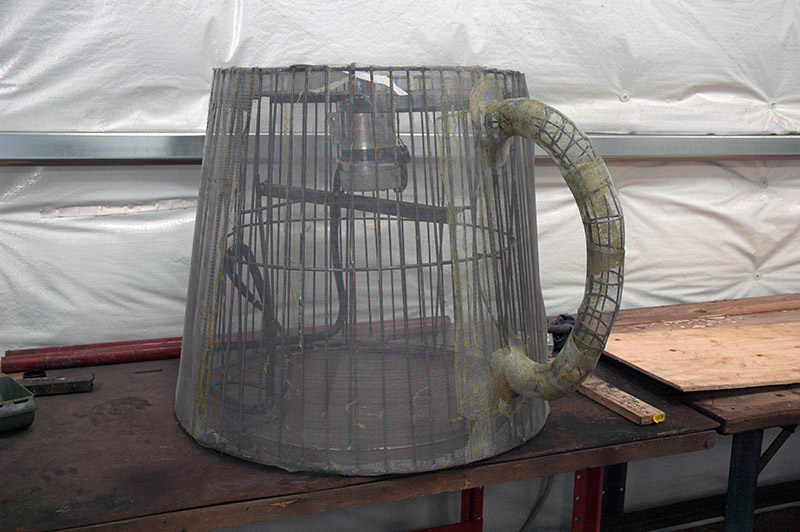
Even something as simple as the beer stein had to be designed and then built for the float. The motor inside will be used to spin the stream of beer being poured to make it look like liquid in motion.
By this time more people were working on the float, and there were often work parties held during the week. Things pretty much stayed on schedule throughout the year, and then, all at once, it was time to start putting flowers on the float!
